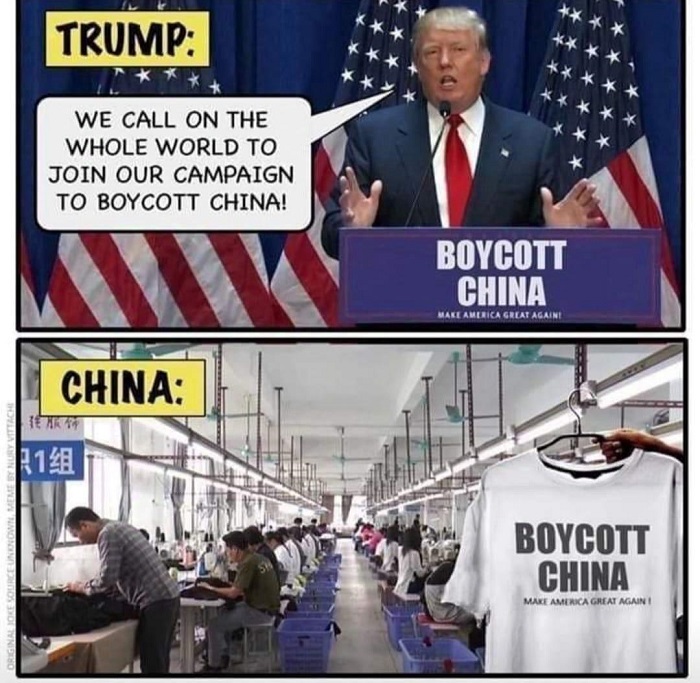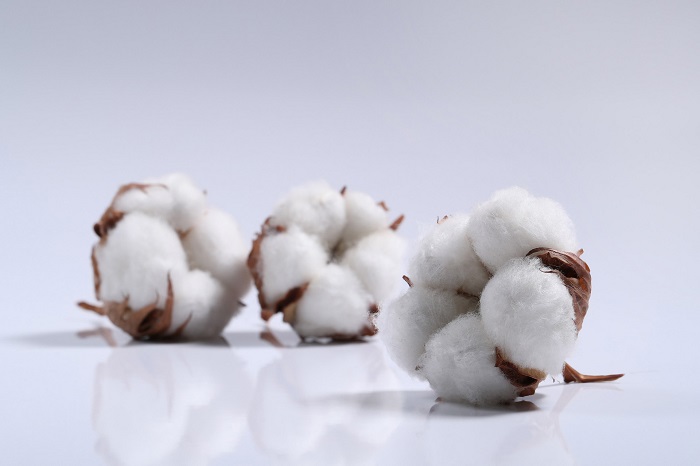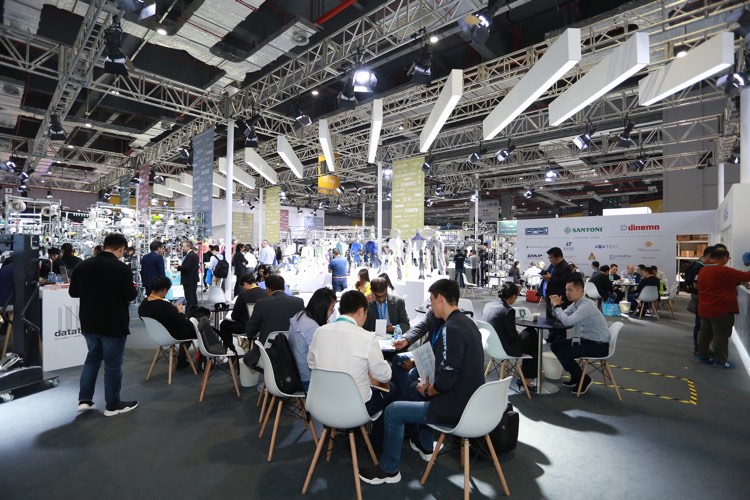FW
Apparel exporters from Tirupur have welcomed the reduction of repo rate by 0.25 per cent. However, they say the interest rate cut would be helpful to quote competitive rates and sustain in the global market only when banks pass on the measures to small and medium enterprises and exporting units.
The reduction in the interest rate comes at a time when there is no sign of a decisive economic recovery in the global market and when there is continued deceleration in China’s economy. Key policy rates have been reduced by 25 basis points from 7.5 per cent to 7.25 per cent with immediate effect and at the same time Cash Reserve Ratio has been kept at four per cent of net demand and time liabilities.
The repo rate is the rate at which Central Bank of a country lends money to commercial banks in the event of any shortfall of funds. Repo rate is used by monetary authorities to control inflation. In the event of inflation, central banks increase the repo rate as this acts as a disincentive for banks to borrow from the central bank. This ultimately reduces the money supply in the economy and thus helps in arresting inflation.
The central bank takes the contrary position in the event of a fall in inflationary pressures. Repo and reverse repo rates form a part of the liquidity adjustment facility.
A recent report by the Textile Exchange, 2014 signified the beginning of a turnaround for the organic cotton market. After three years of steady decline, year 2014 saw 10 per cent growth in overall organic cotton production.
The report says that the news is a sign that the textile industry is moving together towards finding solutions to reduce carbon footprint. Across the industry, there has been noticeable improvement in business practices, stronger communication between supply chain tiers, increase in certifications, and evidence of longer-term planning to increase sustainability efforts.
The reports says that while many factors contribute to this important shift, most of the growth can be attributed to increased market demand with more and more companies showing commitments towards including organic cotton and setting targets explicitly for increasing their organic cotton use; improved supply chain linkages with brands and retailers working to secure their supply of organic, resulting in better connections between organic cotton farmers and the textile supply chain.
www.textileexchange.org
While it has been a hot topic of discussion at all textile and clothing conferences and seminars, the shift in manufacturing is being noticed in major importing countries such as the US and UK. For instance, as per recent UKFT data, there are 58,000 businesses in the fashion and textile supply sector in the UK, which contribute around £12billion in gross value to the UK economy per year. These companies contribute annual exports of more than £8.6billion ($13billion) at wholesale.
Also according to the British Fashion Council research, the value, including retail sales, of the UK fashion industry to the UK economy grew from £21billion in 2009 to £26billion in 2014, with the fashion sector as a whole estimated to support 797,000 jobs in the UK. Brands like Margaret Howell, Marks & Spencer, John Lewis, Jaeger, Arcadia Group and River Island are increasingly sourcing from within UK.
Experts point out that closer to home sourcing is on the rise owing to factors such as speed to market, quick accessibility and easier visits to factories, check on production quality and a better gross margin. The shift is also being witnessed in the US. Textiles and apparel segment still lags behind but there has been an increase in production of about 2.4 per cent domestically, up from 1.75 per cent in 2003. The New York-listed American Apparel, for instance, operates one of the largest sewing factories in North America.
www.ukft.org
Shima Seiki has made strong contributions to the field of technical textiles. The leading Japanese knitting machine manufacturer is showcasing its latest offerings at the onging Techtextil North America exhibition (June 2-4, 2015) being hosted in Houston, Texas. On display is SRY123LP, Shima Seiki’s latest computerised knitting machine with loop presser beds mounted atop conventional needle beds, providing improved control over press down of individual loops. This presents unprecedented capability especially with partial knitting patterns and inlay patterns. Inlay fabric is produced by inserting yarn into existing knit fabric in a weave fashion, opening opportunities for expansion into markets for wovens. Inlay also suppresses typical stretch characteristics of knitted fabrics, and since new materials such as metallic and monofilament yarns can be used for inlay structures, new applications in industrial textiles are realized.
Known for its pioneering whole garment knitting technology wherein a knitted item is produced in its entirety without seams, Shima Seiki has also introduced the SWG061N2 compact whole garment knitting machine that features the company’s original SlideNeedle. Capable of producing small knitted items from safety gloves and compression socks to more sophisticated industrial applications such as tubular shields and harnesses, the SWG061N2 can knit all of these items in 3D without seams.
Another offering is the new yarn unwinding option. Normally when knitting with stiff materials, such as metallic and monofilament yarns, the yarn has a tendency to kink, making it practically impossible to feed smoothly into the knitting machine. A motorized bobbin actively unwinds yarn to provide smooth and stable yarn feed with careful control over feed amount and tension.
www.shimaseiki.com/
Italian weaving major Itema has made significant impact on Indian textile industry. Steps such as restructuring within the top management, implementing lean production systems and the customer-centric approach have helped restore faith among customers across the globe. Itema Version 2.0 has started paying rich dividends to the parent company.
Itema India sales of weaving machines more than doubled in 2014. Marking another milestone, Itema India generated the first order for its high-performance airjet A9500p weaving machines at the GTTES textile event held in Mumbai at the beginning of the year. The company is also gearing up to revamp its existing service centers in an approach to assure its customers of the best after sales and service-related activities. India is indeed the center of attraction for global investors, thanks to the massive slowdown of Chinese textile industry. More and more machinery manufacturers are looking at India for their expansion plans.
As electricity and labor costs are rising in emerging nations such as China and India, which are the main markets for air jet looms, demand for products with greater energy efficiency and enhanced productivity is expanding. Customers are willing to pay a premium for higher and guaranteed performance.
https://www.itemagroup.com/contactus.php
Businesses are mapping their global supply chains and gaining an understanding of whether their production is sourced from areas where water is scarce or suffers from quality issues. A report by WWF-UK points out that businesses sourcing from water-scarce regions face physical, regulatory and reputational risks. China, India, Bangladesh and Pakistan, account for almost 60 per cent of clothing imports – all have high risks across at least two water risk categories. Turkey is also a significant sourcing country and has a high physical water risk as a result of water scarcity.
If a company relies heavily on clothing from Faisalabad in Pakistan, or the Yellow River area in China – both centers for clothing production – their water risks will be high as a result of water scarcity or quality problems. Another important consideration is the indirect risks for clothing through supply chains. For example, the production of cotton, a key raw material for the sector, relies heavily on water. Even if textile production sites are not located in areas of high water risk the cotton supply chain is likely to be exposed to high risks, given that the top three producers, China, India and Pakistan, all have high water risks for cotton production. More than half of UK clothing imports are sourced from areas of high water scarcity risk.
Ludhiana-based Bhandari Hosiery Exports (BHE) would soon develop new fabric manufacturing units at its existing location as a part of its strategy of increasing textile production business. A leading garment exporter with expertise in T-shirts, BHE also aims to tap markets like Europe and the United States that contribute around 70 per cent of the company’s annual sales. The company would invest around Rs 12-15 crores this year after Rs 22 crores spent to create similar production capacity during the last financial year.
Once the new facility is developed and in place, which is expected to be completed this fiscal year, BHE expects the fabric manufacturing capacity to increase to 10 tons per day from the existing four tons per day. Its garments manufacturing capacity stands at around 10,000 pieces per day. The company owns 12 acres of land in Ludhiana at its existing location of which five acres have been dedicated for poplar plants.
At present, selling its range through Big Bazaar and Reliance Trends within India, the company aims to establish its presence through domestic business-to-business (B2B) sales. Domestic markets contribute nearly 30 per cent of its annual sales. BHE posted total income of Rs 124.96 crores for the financial year 2014-15 as against Rs 111.46 crores reported in the previous year. Net profit of the company, however, decline to Rs 0.64 crore for 2014-15 from Rs 1.97 crore in the previous year.
www.bhandariexport.com
While Surat is popular for its saris and dress materials, now the man-made fabric hub is also gaining traction for its disposable beach wear fabrics, in the global markets. The low quality use-and-throw printed fabrics manufactured in the city are finding takers in the countries like the US, Brazil, Thailand, Hong Kong, Australia and Indonesia.
Manufacturers are using these fabrics to manufacture bikini tops and swimwear. The fabrics are made from second quality yarn and are available at a very low price points, almost as cheap as for Rs 20 per meter. A wearer can dump the clothes after use.
Surat is catering to around 40 per cent of the country's man-made fabric demand with the daily production of about 3.5 crore meters. Around 40 lakh meters of low-cost fabric is manufactured per day for beach wear, which is exported via Delhi and Mumbai to various destinations around the world. The beach fabric turnover per annum is pegged at Rs 700 crores.
Surat is also catching up fast with four new denim plants having capacity of about 100 million metres, developed over the last 18 months. The state would also witness many other textile companies extend or expand their denim facilities over the next few years.
World cotton prices continued their see-saw ride in May, falling almost three per cent in the month following a more than four per cent increase in April that occurred after a two per cent decline in March. So far, this year prices have risen by about seven per cent though remain 22 per cent below year ago levels.
The seven-market US average cotton spot price dropped by almost two cents per pound. However, it is unclear why prices moved, since estimates for supply and demand for the current crop year were nearly unchanged in the month. World cotton stocks are projected to increase 8.2 per cent in the current season. Global cotton mill use for 2014-15, on the other hand, is forecast to rise by two per cent above last year.
Although China has started releasing large portions of their cotton reserves it stockpiled during the buying program for several years to support prices, the expected increase in demand for cotton by Chinese mills has not yet materialised. The country is expected to import 7.7 million bales of cotton in the current crop year, over half last year’s level.
Government policy in China combined with a slowdown in global demand for cotton has resulted in increases in cotton stocks in China and many other countries, which will continue to put downward pressure on prices.
An Indian Cotton Federation (ICF) report for the fortnight ended May 15, 2015 reveals that about 3.45 crore cotton bales have been pressed till now. ICF expects that in states like Gujarat and Maharashtra, farmers may shift from cotton to pulses and groundnut as they find cotton farming unviable due to untimely rains and lower than MSP prices.
The report added that CCI has marketed 12 lakh bales through auction out of their stock of 86 lakh bales, which also includes 4.5 lakh bales of the Maharashtra Cotton Federation. USDA officials recently visited Coimbatore to meet ICF and SIMA office bearers to discuss current US, global and Indian cotton scenario. Due to lack of export demand and also slow domestic off-take, ICF quoting market experts says the carry over stock may double from the last season’s end stock.
Nearly 25 per cent cotton sowing has been completed in the North zone, of which in Punjab, it is just around 5 per cent, while in Rajasthan, sowing has just started and in Haryana around 40 per cent sowing has been completed. In Gujarat, approximately 1 crore bales have been pressed till now as per trade sources of which in Saurashtra approximately 64 lakh bales have been pressed while around 26 lakh bales has been pressed in North Gujarat. Approximately 6 lakh bales have been pressed in stations near Bharuch and Surat while in areas surrounding Kutch, 3.5 lakh bales have been pressed and in areas near Himmatnagar, around 1.5 lakh bales have been pressed.












